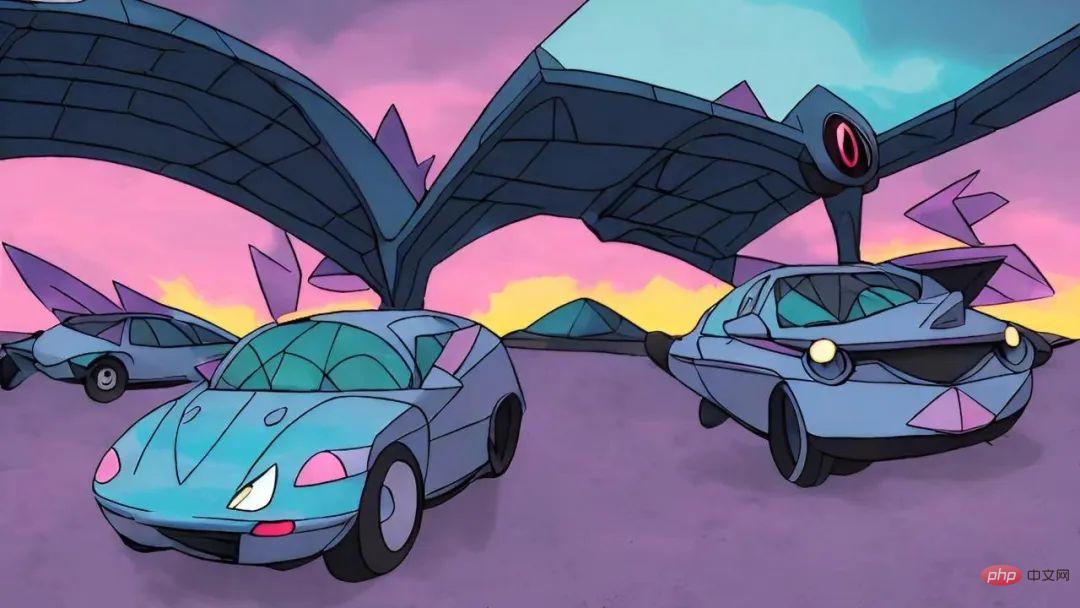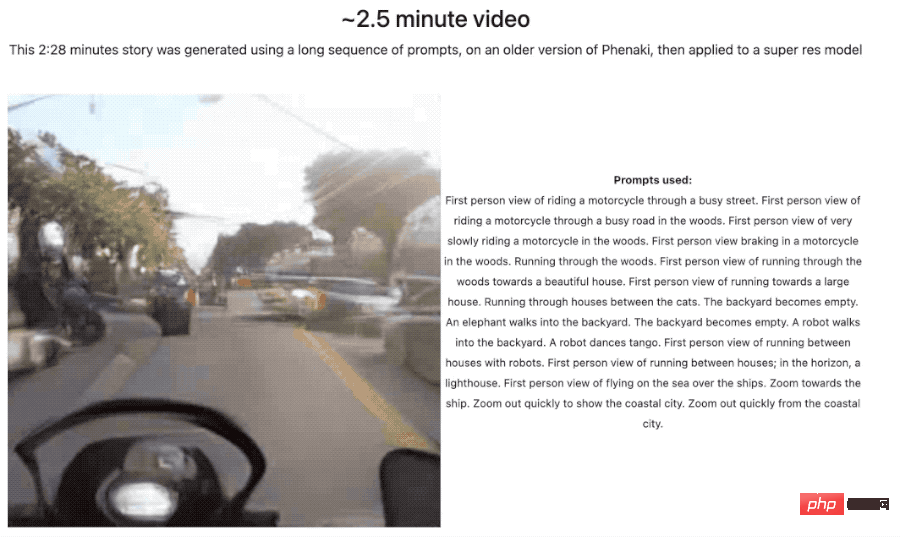
Recently, generative AI has become popular again! A WeChat applet called "Dream Stealer" became an instant hit, reaching a record of adding 50,000 new users every day.
Dream Stealer is an AI platform that can generate images based on input text. It is a branch of AIGC (AI-Generated Content).
After the user uses their imagination and enters a text description, Dream Stealer can generate pictures in three ratios: 1:1, 9:16 and 16:9, and there are 24 painting styles to choose from - in addition to Basic painting types such as oil painting, watercolor, and sketch also include special styles such as cyberpunk, vaporwave, pixel art, Ghibli, and CG rendering.

Picture: Technology Cloud Report editor used "Dream Stealer" WeChat applet to generate
In fact, this is not the first "Yiwensheng" Graph” AI software. From Midjourney to Stable Diffusion, generative AI has been the hottest topic in the past two years.
As an important direction in the development of AI, generative AI has great potential for development.
According to data from Gartner in the first half of the year, it is expected that generative AI will account for 10% of all generated data by 2025, compared with less than 1% currently.
Some people believe that 2022 will be the first year when generative AI matures from technology to penetrate into the fundamentals of society.
In recent years, the development of AI technology in the visual field can be described as "rapid".
In January last year, OpenAI, a company dedicated to "benefiting all mankind with general artificial intelligence", released the epoch-making DALL-E based on the GPT-3 model, which realizes the generation of images from text.
In April this year, the second-generation DALL-E 2 model released by OpenAI once again set a new benchmark in the field of image generation.
Users can generate corresponding images through short text descriptions (prompt), so that people who cannot draw can also turn their imagination into artistic creations, such as the sentence "Alpaca playing basketball" The four pictures generated by this look very much in line with everyone’s expected imagination.

DALL-E 2 model generated image example
Not only that, as the granularity of the text description continues to be refined, the generated images will also become more and more sophisticated. The more accurate it is, the effect will be quite shocking to non-professionals.
But models like DALL-E 2 still stay in the field of two-dimensional creation, that is, image generation, and cannot generate 360-degree 3D models without dead ends.
However, this is still not difficult for very creative algorithm researchers. One of the latest achievements of Google Research-DreamFusion model, can generate 3D models by inputting simple text prompts, which can not only generate 3D models under different lighting conditions. Rendering is performed below, and the generated 3D model also has characteristics such as density and color. It can even integrate multiple generated 3D models into one scene.
After generating 3D images, Meta’s algorithm staff further opened up their ideas, challenged higher difficulties, and began to explore using text prompts to directly generate videos.
Although video is essentially the superposition of a series of images, compared to generating images, when using text to generate a video, it is not only necessary to generate multiple frames in the same scene, but also to ensure that adjacent frames coherence between. Since there is very little high-quality video data available when training the model, but the amount of calculation is very large, it greatly increases the complexity of the video generation task.
In September this year, researchers from Meta released Make-A-Video, a high-quality short video generation model based on artificial intelligence, which is equivalent to the video version of DALL-E, also nicknamed "Make videos with your mouth" means you can create new video content through text prompts. The key technology behind it also comes from the "text-image" synthesis technology used by image generators such as DALL-E.
Only one week later, Google CEO Pichai officially announced two models to challenge Meta’s Make-A-Video head-on, namely Imagen Video and Phenaki.
Compared with Make-A-Video, Imagen Video highlights the high-definition characteristics of video, can generate 1280*768 resolution, 24 frames per second video clips, and can also understand and generate works of different artistic styles. ;
Understand the 3D structure of objects and will not deform during rotation display;
It even inherits Imagen’s ability to accurately depict text, and on this basis, only simple descriptions can generate various creative ideas animation.

Imagen Video generated video example
And Phenaki can generate a lower resolution long shot of more than 2 minutes based on a prompt of about 200 words. , tells a relatively complete story.

Phenaki Generated Video Example
Currently, there are many generative AI applications in China.
For example, ByteDance’s Jianying APP provides AI-generated video functions and can be used for free.
The cut-out picture-text function is similar to Google. Creators can generate a creative short video through a few keywords or a short paragraph of text.
Clip Screen can also intelligently match video materials based on text descriptions, and package videos into more vertical content works, including finance, history, humanities and other categories.
In January 2022, NetEase launched the one-stop AI music creation platform "NetEase Tianyin", which AI-generated New Year greetings edited by users into songs, and launched a web-side professional version in the first half of the year.
In September 2021, Caiyun Xiaomeng APP was launched, which can create various types of text. Users only need to give a beginning of 1-1000 words, and Caiyun Xiaomeng can continue to write the following story.
In fact, there are many forms of AI creation. When generative AI technology is applied to writing, machine versions of journalists, novelists, poets, screenwriters, etc. can be born. When it is applied to the fields of painting, music and dance, it can "cultivate" painters, composers and editors. Dance staff.
In the past year, generative AI has developed even better. Software giants in the AI field such as Google, Microsoft, and Meta have promoted this technology internally and integrated generative AI into their products.
Why is generative AI suddenly popular?
In fact, generative AI technology has been developing rapidly. However, due to the high technical threshold, it was mostly limited to a small circle in the technology world.
Looking back at the development history of AI technology, we will find that the explosion of generative AI is inseparable from three factors: better models, more data, and more calculations.
Before 2015, small models were considered the "state-of-the-art technology" for understanding language. These small models excel at analytical tasks and are deployed in jobs ranging from predicting delivery times to classifying fraud.
However, their expressive power is not strong enough for general generation tasks. Generating human-level writing or code is still just a dream.
In 2017, Google Research published a landmark paper (Attention is All You Need) describing a new neural network architecture for natural language understanding, called transformers, that can generate quality Superior language models, at the same time, are more parallelizable and require significantly less training time.
Of course, as models get larger, they start to show superhuman performance. The amount of computation used to train these models increased by six orders of magnitude from 2015 to 2020, with the results exceeding benchmarks for human performance in handwriting, speech and image recognition, reading comprehension, and language understanding.
Among them, OpenAI's GPT-3 stands out. The performance of this model has made a huge leap over GPT-2, showing better capabilities from code generation to joke writing.
Despite all the advances in fundamental research, these models are not universal.
They are large, difficult to run (requiring GPU coordination), not widely available (unavailable or only in closed beta), and expensive to use as a cloud service.
But despite these limitations, the earliest generative AI applications are beginning to enter the battlefield.
Afterwards, as computing became cheaper, the industry continued to develop better algorithms and larger models.
Developer permissions are expanded from closed beta to open beta, or in some cases, open source.
Now that the platform layer is solid, coupled with models continuing to get better, faster, and cheaper, and access to models tending to be free and open source, the AI application layer is ripe for creativity to explode.
For example, in August this year, the text-image generation model Stable Diffusion was open sourced. Successors can better use this open source tool to dig out a richer content ecology and popularize it to a wider range of C-end users. play a vital role.
The popularity of Stable Diffusion is essentially that open source releases creativity.
The venture capital institution Sequoia Capital mentioned in a blog post on its official website: “Generative AI has the potential to generate trillions Economic value in U.S. dollars.
” According to Sequoia Capital, generative AI can transform every industry that requires humans to create original works, from games to advertising to law.
Specifically, the application scenarios of generative AI in the future are very broad. In addition to content production industries such as cultural creation and news, generative AI will also be used in health care, digital commerce, manufacturing, Agriculture and other industries have rich application prospects, such as helping doctors detect lesions in X-ray, CT and other equipment scans, creating digital twins of goods, assisting in testing product quality, etc.
There is also abundant application space in popular technologies such as XR, digital twins, and autonomous vehicles.
But it is worth noting that there are still many problems that need to be solved in current generative AI.
For example, in the entertainment field, one of the reasons why many people use generative AI for creation is to avoid copyright issues, but this does not mean that there are no hidden dangers.
On the one hand, AI creation also recombines the learned data according to requirements. Although the granularity is getting finer and finer, it is inevitable that some sharp-eyed people will see that it may be a reference. Some netizens even said on social platforms that they had vaguely seen traces of suspected signatures on an AI-generated picture.
On the other hand, most of the current AI generation platforms do not claim copyright or clearly state that they can be used for commercial purposes. However, as generative AI gradually becomes commercialized, does such a copyright environment exist? Whether new copyright issues will arise also needs to be discussed.
The logic and security of generative AI also need to be improved. Current generative AI is prone to making common sense mistakes, and is also prone to problems in areas that require long-term memory.
For example, in the process of AI-generated novels, there are often inconsistencies due to the long length.
Therefore, even if generative AI can already be applied in many fields, in order to really put generative AI to work, a large amount of training must be done to avoid the "mistakes" caused by AI. heavy losses.
After all, application scenarios such as medical and manufacturing do not have the same room for trial and error as the cultural and creative industries.
Although generative AI is currently inseparable from human intervention, it is undeniable that generative AI still has great potential development potential.
The emergence of generative AI means that AI begins to assume a new role in real-life content, expanding from "observation and prediction" to "direct generation and decision-making". In other words, generative AI creates, not just analyzes.
As OpenAI CEO Sam Altman said: "Generative AI reminds us that it is difficult to make predictions about artificial intelligence.
Ten years ago, the conventional wisdom was: AI would impact physical labor first; then, cognitive labor; and then, maybe one day, it could do creative work. Now it looks like it will happen in the reverse order."
The above is the detailed content of AI writes novels, paintings, and cuts videos. Generative AI is even more popular!. For more information, please follow other related articles on the PHP Chinese website!




